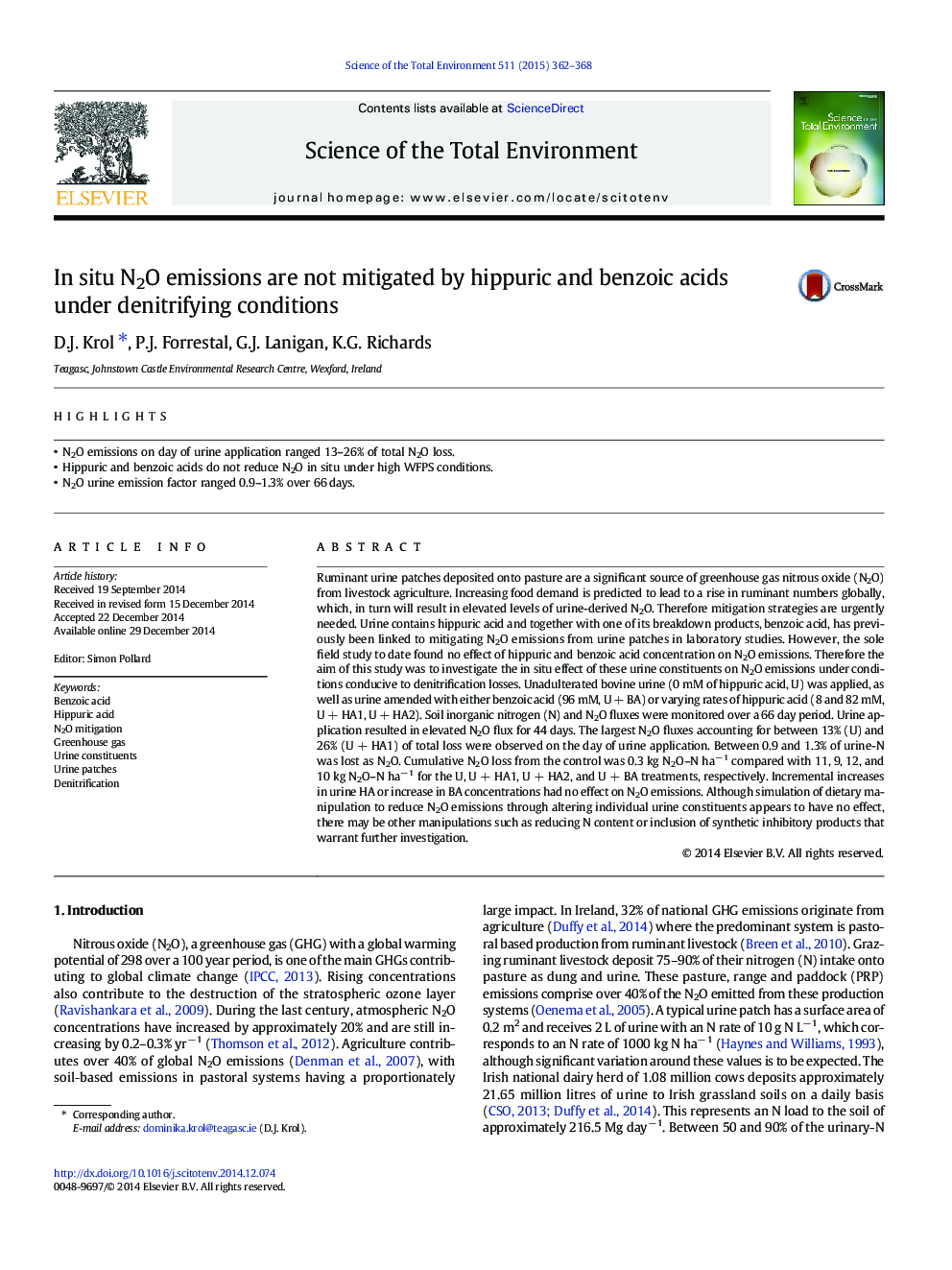| کد مقاله | کد نشریه | سال انتشار | مقاله انگلیسی | نسخه تمام متن |
|---|---|---|---|---|
| 6327475 | 1619766 | 2015 | 7 صفحه PDF | دانلود رایگان |
- N2O emissions on day of urine application ranged 13-26% of total N2O loss.
- Hippuric and benzoic acids do not reduce N2O in situ under high WFPS conditions.
- N2O urine emission factor ranged 0.9-1.3% over 66Â days.
Ruminant urine patches deposited onto pasture are a significant source of greenhouse gas nitrous oxide (N2O) from livestock agriculture. Increasing food demand is predicted to lead to a rise in ruminant numbers globally, which, in turn will result in elevated levels of urine-derived N2O. Therefore mitigation strategies are urgently needed. Urine contains hippuric acid and together with one of its breakdown products, benzoic acid, has previously been linked to mitigating N2O emissions from urine patches in laboratory studies. However, the sole field study to date found no effect of hippuric and benzoic acid concentration on N2O emissions. Therefore the aim of this study was to investigate the in situ effect of these urine constituents on N2O emissions under conditions conducive to denitrification losses. Unadulterated bovine urine (0 mM of hippuric acid, U) was applied, as well as urine amended with either benzoic acid (96 mM, U + BA) or varying rates of hippuric acid (8 and 82 mM, U + HA1, U + HA2). Soil inorganic nitrogen (N) and N2O fluxes were monitored over a 66 day period. Urine application resulted in elevated N2O flux for 44 days. The largest N2O fluxes accounting for between 13% (U) and 26% (U + HA1) of total loss were observed on the day of urine application. Between 0.9 and 1.3% of urine-N was lost as N2O. Cumulative N2O loss from the control was 0.3 kg N2O-N haâ 1 compared with 11, 9, 12, and 10 kg N2O-N haâ 1 for the U, U + HA1, U + HA2, and U + BA treatments, respectively. Incremental increases in urine HA or increase in BA concentrations had no effect on N2O emissions. Although simulation of dietary manipulation to reduce N2O emissions through altering individual urine constituents appears to have no effect, there may be other manipulations such as reducing N content or inclusion of synthetic inhibitory products that warrant further investigation.
Journal: Science of The Total Environment - Volume 511, 1 April 2015, Pages 362-368
